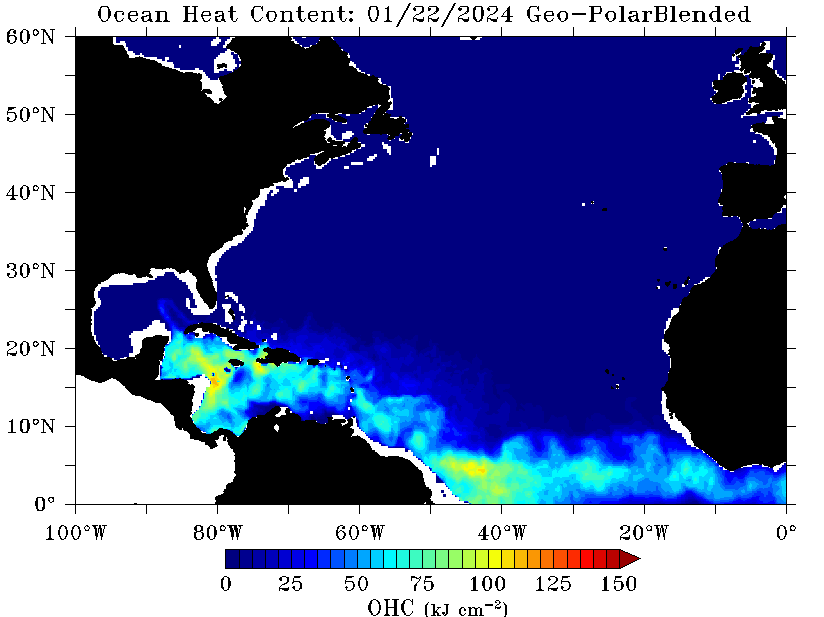Jacksonville, Fl. — The “Buresh Bottom Line”: Always be prepared!.....First Alert Hurricane Preparation Guide... City of Jacksonville Preparedness Guide... Georgia Hurricane Guide.
STAY INFORMED: Get the * FREE * First Alert Weather app
FREE NEWS UPDATES, ALERTS: Action News Jax app for Apple | For Android
WATCH “Preparing for the Storm”
WATCH “The Ins & Outs of Hurricane Season”
READ the First Alert Hurricane Center “Survival Guide”
LISTEN & WATCH “Surviving the Storm” - WOKV Radio & Action News Jax
***** ALWAYS CHECK & RE-CHECK THE LATEST FORECAST & UPDATES! *****
REMEMBER WHEN A TROPICAL STORM OR HURRICANE IS APPROACHING: Taping windows is *not* recommended & will not keep glass from breaking. Instead close curtains & blinds.
Realize the forecast cone (”cone of uncertainty”) is the average forecast error over a given time - out to 5 days - & *does not* indicate the width of the storm &/or where damage that might occur.
*** LOCAL (Jacksonville/NE Fl./SE Ga.) IMPACTS FROM THE TROPICS: None through this week...
The Atlantic Basin Overview:
** “Lee” was upgraded to a tropical storm Tue. afternoon & to a hurricane Wed. afternoon & will be “on the field” through at least next weekend.
** A strong tropical wave is over the far E. Atlantic & - while it is likely to develop - should stay far out to sea over the E. & Central Atlantic.

(1) The strong tropical wave - ‘95-L’ - that moved off the coast of Africa this past weekend and was upgraded to tropical depression #13 Tue. morning then to tropical storm “Lee” Tue. afternoon & then to a hurricane Wed. afternoon. Lee will move steadily west/northwest through the weekend while gradually slowing down & appears destined to become a textbook long track major hurricane (Cat. 3+). I would not be surprised to see an annular hurricane at times once Lee is mature.
*Current* indications are north & northeast of Puerto Rico over the weekend then a veer more northwest east of the Bahamas & east of Fl. Given weakening shear, warm sea surface temps. & already fast organization (excellent outflow over the top & poleward outflow channels) + nearly unanimous agreement among the forecast models, the third major (Franklin & Idalia so far) hurricane of the Atlantic season is likely on the way. Fluctuations in intensity will be modulated by structural changes such as eyewall replacement cycles from the weekend into much of next week. It appears Lee may move over the cooled wake from Franklin by the middle of next week.
If this is a threat for any of the U.S. lower 48, it would appear to be well north of Jacksonville on or near the upper U.S. east coast (New England) &/or some of the eastern provinces of Canada... & it’s possible it could stay east of the entire eastern seaboard but way too early to know definitively. The forecast models are in remarkably good agreement showing a powerful hurricane with the GFS generally a little a little more west than the European though the weekend not reaching Jacksonville’s latitude until next Thu./Fri. while 1,500+ miles to the east. An easterly swell, rough seas & surf will impact our local beaches for much of next week with a high rip current risk with the potential for 5-8 foot breakers along the NE Fl. & SE Ga. coast next Wed. through Fri.
There continues to be at least some signal in the forecast models for potential direct impacts from Lee for New England by late next week into the following weekend a well as Nova Scotia & Newfoundland.
The Bermuda High remains anchored rather far north & east which is favorable for an early turn north what looks to be a well developed & strong hurricane. But once Lee has rounded the western edge of the Bermuda high while an upper level trough is moving through the Central & Eastern U.S., there is a chance Lee makes a turn more north & even northwest later next week which could bring into “play” New England & Eastern Canada as an upper level trough moves eastward toward the NW Atlantic possibly drawing Lee a little more northwest for a time as the tropical cyclone interacts with the trough.
(2) A very strong tropical wave - ‘96-L’ is coming off the coast of Africa & has a good chance to develop in “Margot”. But this wave is likely to stay far to the east over the Eastern & Central Atlantic.


The image below is from University of Wisconsin-Milwaukee & shows the top 10 analog tracks for where Lee is located (only one of the analogs has hit Florida)....


‘96-L’ off the coast of Africa:


The map below is the 500 mb (~30,000 feet) forecast for next Tue. (09/12) from the European model. The Bermuda High is weaker & shifted a little northeast while a trough of low pressure dives into the Eastern U.S. This combination should help Lee turn northward to the east of Florida but an eventual turn more north or northwest is still possible in the long range once north of Florida’s latitude.



Check out the upper oceanic heat content (UOHC) [tropical cyclone heat potential/TCHP] across the SW Atlantic, Gulf & Caribbean. The warmth is very deep. But keep in mind warm ocean temps. alone doesn’t necessarily equate to a “big” hurricane season (need other ingredients & factors to be favorable too) but it’s obvious there is a lot of very warm water at great depths over the Caribbean & Gulf of Mexico stretching eastward all the way into the Central Atlantic:




Water vapor loop (dark blue/yellow is dry mid & upper level air):


July tropical cyclone origins:
Averages below based on climatology for the Atlantic Basin for August:

Wind shear:




Saharan dust spreads west each year from Africa by the prevailing winds (from east to west over the Atlantic). Dry air - yellow/orange/red/pink. Widespread dust is indicative of dry air that can impede the development of tropical cyclones. However, sometimes “wanna’ be” waves will just wait until they get to the other side of - or away from - the plume then try to develop if other conditions are favorable. In my personal opinion, way too much is made about the presence of Saharan dust & how it relates to tropical cyclones. In any case, the peak of Saharan dust typically is in June & July.

2023 names..... “Margot” is the next name on the Atlantic list (names are picked at random by the World Meteorological Organization... repeat every 6 years). Historic storms are retired [Florence & Michael in ’18... Dorian in ’19 & Laura, Eta & Iota in ‘20, Ida in ‘21 & Fiona & Ian in ‘22]). In fact, this year’s list of names is rather infamous with “Katrina”, “Rita” & “Wilma” retired from the ‘05 list & “Harvey”, “Irma”,“Maria” & “Nate” from the ‘17 list. The WMO decided - beginning in 2021 - that the Greek alphabet will be no longer used & instead there will be a supplemental list of names if the first list is exhausted (has only happened three times - 2005, 2020 & 2021). The naming of tropical cyclones began on a consistent basis in 1953. More on the history of naming tropical cyclones * here *.





East Atlantic:





Mid & upper level wind shear (enemy of tropical cyclones) analysis (CIMMS). The red lines indicate strong shear:
Water vapor imagery (dark blue indicates dry air):

Deep oceanic heat content over the Gulf, Caribbean & deep tropical Atlantic. The brighter colors are expanding dramatically as we near the peak of the hurricane season.:

Sea surface temp. anomalies:


SE U.S. surface map:

Surface analysis centered on the tropical Atlantic:

Surface analysis of the Gulf:

Caribbean:

Atlantic Basin wave period forecast for 24, 48, 72 & 96 hours respectively:




East/Central Pacific:
“Jova” became a Cat. 5 Wed. but is no threat to land & will weaken rather rapidly as the storm gain latitude & moves over cooler water:






West Pacific:
Newly formed “Yun-Yeung” is forecast to move Japan over the next few days as a weakening tropical storm:


Global tropical activity:



Cox Media Group







